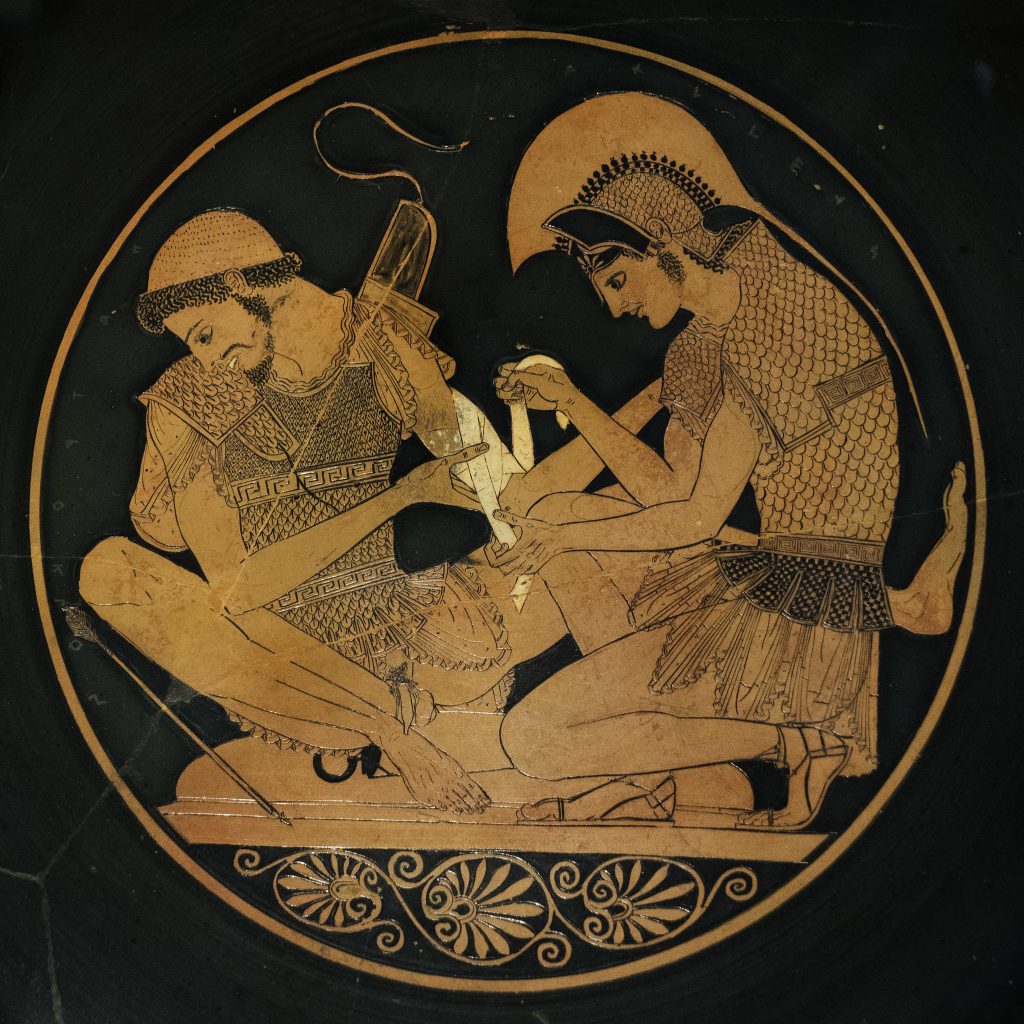Ali Adams

In his article “The ‘Great Triangle’ in Early Greek Rhetoric and Poetics,” John T. Kirby writes about the concept of the “Great Triangle”—a theory that attempts to explain motivations in ancient Greek literature. Kirby argues that readers can look at character motivations through the lens of this triangle in order to better analyze and understand character motivations, and that this particular concept is prevalent in almost all ancient Greek literature. There are three “points” to the triangle: peitho, bia, and eros. Although each of the three three points can be viewed in isolation, Kirby explains that these concepts are better looked at in dyads—pairs of two—because of the juxtaposition created by the combining points.
To begin understanding the triangle as a whole, the definition of the points must first be established. Peitho is, as Kirby describes it, “the word for persuasive communication” (213). Any type of communication that attempts to persuade is considered peitho. Bia means force—usually physical and violent—and eros means desire. All of these names and concepts stem from Greek gods or goddesses. The first combination, and the one most prevalent in Greek literature and mythology, is peitho/bia. This link represents force as persuasion; as Kirby explains, “I will try to persuade you, but, failing that, I will force you” (215). Kirby uses an example from Homer’s Iliad to illustrate this concept. He discusses how the whole storyline of this epic is the arc of bia to peitho. The epic immediately starts off with bia by describing the “anger of Achilles” (1). The Iliad opens with a fight between Achilles and Agamemnon about possessing a girl—bia. By the end of the epic, though, it seems as though bia has become peitho because Achilles is convinced to give up the body of the man whom he killed in retaliation for the murder of his soulmate, Patroclus. Priam, Hector’s father, persuades Achilles by mentioning his own father: “Think of your father, O Achilles like unto the gods, who is such even as I am, on the sad threshold of old age” (24).
The next dyad that Kirby highlights is peitho/eros. This dyad is a little more complex than the aforementioned one because there are numerous ways it is illustrated in ancient Greek literature. One of the ways Kirby mentions is eros—typically sexual desire—as persuasion, which is illustrated in Homer’s Odyssey. Eros can also be “an informant of eros,” which is illustrated in Plato’s Symposium as well as Phaedrus (Kirby 222). The difference between Homer’s usage of eros and Plato’s usage of eros is that Plato features a more platonic view of eros rather than romantic or sexual desires.
The last axis mentioned in Kirby’s article is that of bia/eros. Kirby describes that “the ramifications of movement along this axis are unsettling and sometimes macabre, but the mechanism is clear: eros sometimes motivates bia” (223). Bia can result from the dissatisfaction of eros. The example given is from Homer’s Odyssey: the start of the Trojan War came from the interaction of eros and bia—the abduction of Helen by Paris.
Kirby provides an easy to understand and somewhat straightforward way of analyzing motivations in ancient Greek literature with his “Great Triangle.” He features examples from an abundance of ancient Greek literature from Homer to Plato, and each example accurately outlines the motivations within the stories. Who knows—maybe this concept can be used to analyze motivations in contemporary, modern-day literature and popular culture. Take a look at any character who has some sort of motivation and consider their motivations, and maybe a pattern not unlike the one that Kirby outlines may emerge.
Sources
- Kirby, John T. “The ‘Great Triangle’ in Early Greek Rhetoric and Poetics.” Rhetorica, vol. 8, no. 3, 1990, pp. 213–228.
- Homer. The Iliad of Homer. Translated by Samuel Butler, Project Gutenberg, 1999.
